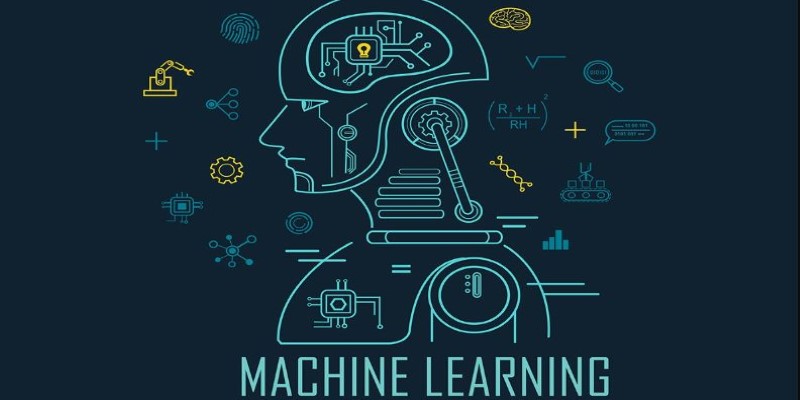When working with data, two major approaches often emerge—statistics and machine learning. While they share similarities, they are fundamentally different in their objectives, methodologies, and applications. Some see machine learning as an advanced form of statistics, but that's an oversimplification.
In reality, these fields have distinct goals: statistics is concerned with explaining data relationships, whereas machine learning is concerned with prediction and automation. Regardless of whether you're in research, finance, healthcare, or technology, being aware of the differences can assist you in deciding which methodology is most suitable for your purposes.
The Core Philosophies: Explanation vs. Prediction
The most significant distinction between machine learning and statistics is in their philosophies. Statistics is based on probability and inference—concluding data about a population. It is based on formulated models that are meant to be interpretable so that relationships among variables are comprehensible.
Machine learning, however, is founded on the principle of enhancing prediction precision. Instead of relying on theoretical explanations, machine learning models learn from patterns in data and get better with time. In contrast to statistical methods that usually need predefined assumptions, machine learning dynamically adjusts to evolving patterns without rigid theoretical constraints. This makes it more appropriate for large, intricate datasets where patterns might not be evident.
An intuitive way to grasp this difference is through an example. Suppose you want to understand how marketing spend affects sales. A statistical model, like linear regression, will define the degree of increased sales for each spent dollar in a way that is easy to interpret. By contrast, a machine learning model could employ a neural network to predict future sales based on historical marketing patterns even when the precise connection between inputs and outputs is unknown.
Methodologies: Structured Models, Data-Driven Learning, and Their Convergence
Statistics is based on structured mathematical models like regression analysis, hypothesis testing, and probability distributions. These models are based on certain conditions, such as linearity and normality, to provide reliable results. Statistical methods are extensively applied in research where causal relationships are important to know.

Machine learning, in contrast, follows a data-driven approach. Instead of relying on predefined structures, it employs algorithms like decision trees, support vector machines, and neural networks to learn patterns from data. This makes machine learning highly effective in areas such as image recognition and natural language processing, where structured models struggle to capture complexity.
For example, in credit card fraud detection, a statistical approach might define strict rules, such as flagging transactions above a certain amount. Machine learning, however, analyzes massive transaction datasets and identifies evolving fraud patterns, improving accuracy over time.
Despite their differences, machine learning and statistics are deeply connected. Many machine learning algorithms, including Bayesian inference and regression models, are built on statistical principles. Without statistical foundations, machine learning would lack the mathematical rigor necessary for effective data analysis.
At the same time, machine learning has enhanced traditional statistics. Techniques like regularization, cross-validation, and ensemble learning have improved statistical models, making them more adaptable to real-world data. Today, data scientists often blend both approaches—using statistical models when interpretability is key and machine learning when predictive power is the priority.
This intersection is particularly evident in artificial intelligence and data science, where both fields complement each other. While statistics ensures methodological reliability, machine learning enables scalable, high-accuracy solutions. Together, they provide a robust framework for tackling complex analytical challenges in an increasingly data-driven world.
Accuracy vs. Interpretability
One of the biggest trade-offs between statistics and machine learning is interpretability versus accuracy. Statistical models prioritize transparency—users can understand how each variable influences the outcome. This is critical in areas like medical research, where understanding the relationship between treatments and outcomes is as important as making predictions.
Machine learning, however, often achieves higher accuracy at the cost of interpretability. Deep learning models, for instance, function as "black boxes" where the reasoning behind predictions is difficult to trace. While this is acceptable in applications like recommendation systems or image classification, it becomes problematic in domains requiring transparency, such as loan approvals or legal decision-making.
Efforts to improve the interpretability of machine learning models have led to techniques like SHAP values and LIME, which help explain how individual predictions are made. However, traditional statistical models remain superior when interpretability is the primary concern.
Applications: Where Each Method Excels
The choice between machine learning and statistics depends on the nature of the problem. Traditional statistical methods remain the gold standard in areas where hypothesis testing and causal inference are needed, such as medical research, economics, and policy-making. For instance, randomized controlled trials in healthcare rely on statistical analysis to assess the effectiveness of new treatments.

Machine learning is transforming technology-driven industries. In finance, it is used for high-frequency trading and fraud detection. In retail, recommendation algorithms personalize shopping experiences. In healthcare, AI models diagnose diseases with greater accuracy than human doctors. Unlike statistical methods, machine learning scales well with large, complex datasets, making it ideal for big data applications.
A clear example of this distinction is in weather forecasting. Statistical models may analyze past temperature data to predict future trends based on historical averages. Machine learning, however, processes real-time atmospheric data and satellite images, refining predictions dynamically as new data arrives.
Conclusion
Machine learning and statistics share common ground but serve different purposes. Statistics focuses on structured models and interpretability, making it crucial for research and decision-making. Machine learning, in contrast, prioritizes prediction and adapts dynamically, excelling in large-scale, complex datasets. While statistics offer transparency, machine learning enhances automation and pattern recognition. The two fields often complement each other rather than compete, with professionals using both to maximize insights. Instead of choosing one over the other, the key lies in leveraging their strengths for different scenarios. As data science advances, their intersection will continue shaping the future of analytics and decision-making.
